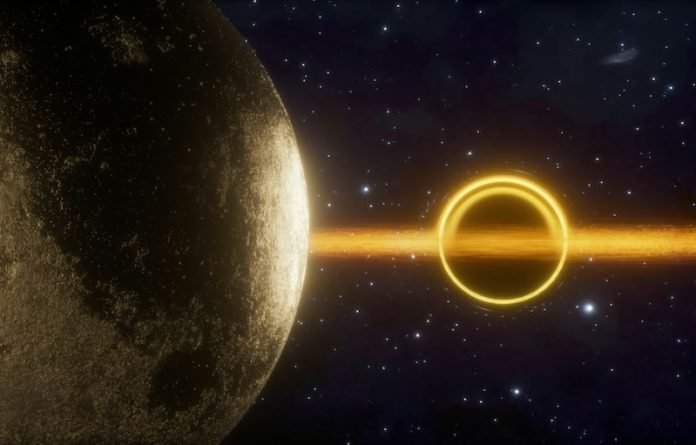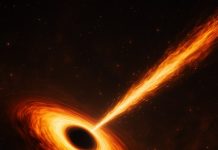
A new study from the University of Bath, employing artificial intelligence, has provided new insights into the growth of supermassive black holes and their role in galaxy evolution.
Contrary to previous beliefs that galaxy mergers were the primary catalyst for the feeding and growth of these colossal entities, this research underscores the necessity of a cold gas reservoir within the host galaxy for black hole accretion.
Published in the Monthly Notices of the Royal Astronomical Society, the study marks a significant advancement in understanding the complex interplay between galaxy mergers, supermassive black hole accretion, and star formation.
By leveraging machine learning techniques, the research team, led by Ph.D. student Mathilda Avirett-Mackenzie, has bypassed the limitations and biases inherent in human classification of galaxy mergers.
Supermassive black holes, the gargantuan centers of massive galaxies, spend most of their existence in a quiescent state, exerting minimal impact on their surroundings.
However, during brief periods of activity, they become accretion powerhouses, drawing in vast amounts of gas and outshining their entire galaxies. These episodes are not just spectacular cosmic phenomena but pivotal moments that significantly influence galaxy formation and evolution.
The traditional method of identifying galaxy mergers through visual inspection by either experts or crowdsourced volunteers has proven to be fraught with inconsistencies and inaccuracies.
Recognizing the need for a more reliable approach, the Bath-led team applied a neural network trained on simulated galaxy mergers to real astronomical observations. This AI-driven method not only improves the accuracy of merger identification but also allows for the analysis of a much larger sample of galaxies.
The findings from this innovative approach reveal that the presence of cold gas is a critical factor in fueling the growth of supermassive black holes during galaxy mergers.
This insight challenges the long-held assumption that mergers alone are sufficient to kickstart black hole accretion. Instead, it appears that star-forming galaxies, rich in cold gas, are the environments where black holes can truly flourish.
The implications of this research extend beyond academic curiosity. By enhancing our understanding of how supermassive black holes grow and affect their host galaxies, scientists can further unravel the mysteries of the universe’s structure and history.
The study also exemplifies the power of machine learning in advancing astrophysical research, opening new avenues for exploring the cosmos without the limitations of human bias.
As we gaze into the night sky, marveling at phenomena like the Orion Nebula, it’s studies like these that remind us of the ongoing, dynamic processes shaping our galaxy and beyond.
With AI as a tool in their arsenal, astrophysicists are poised to uncover even more about the universe’s vast and varied tapestry, one galaxy at a time.
The research findings can be found in the Monthly Notices of the Royal Astronomical Society.
Copyright © 2024 Knowridge Science Report. All rights reserved.



